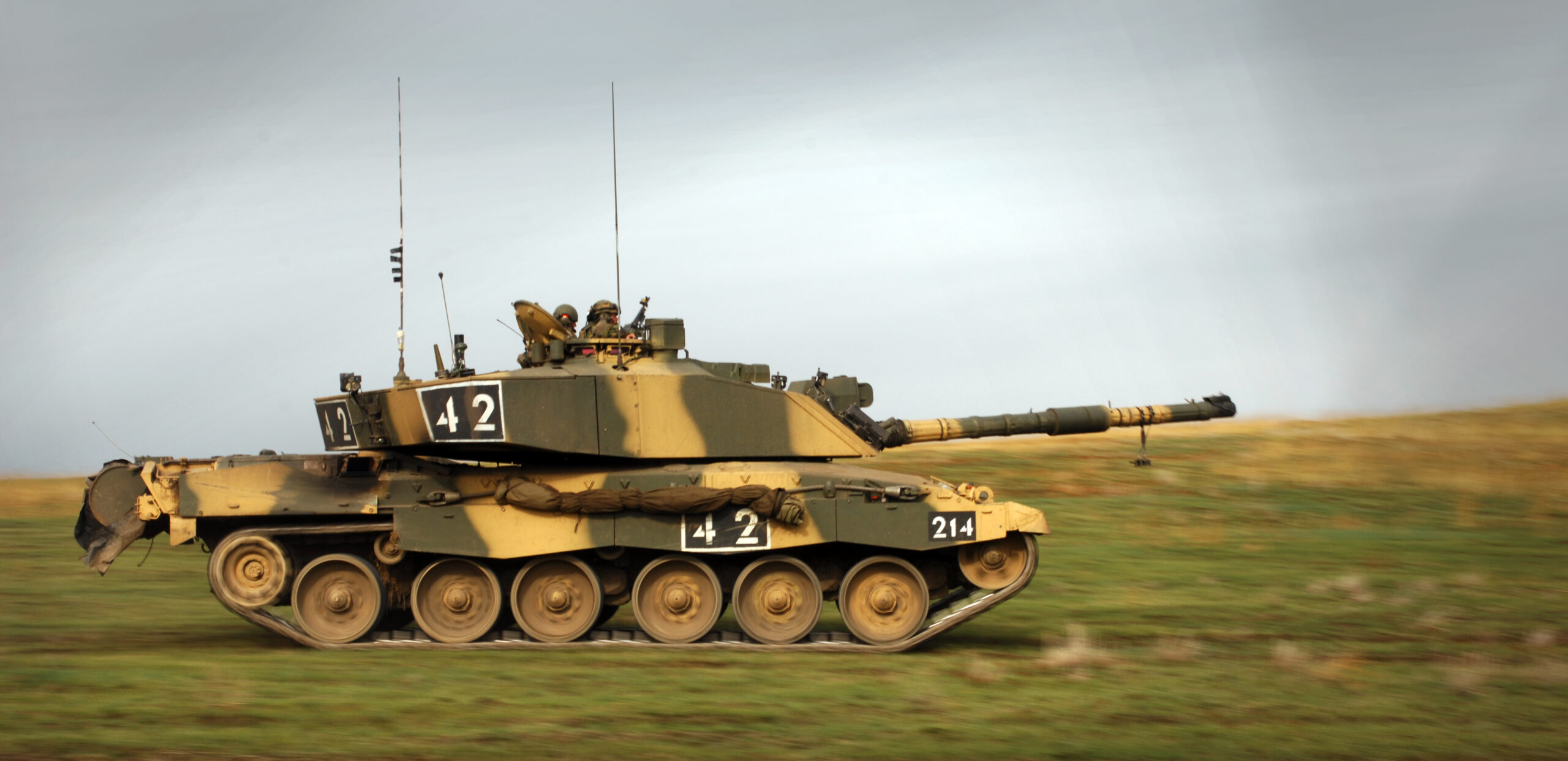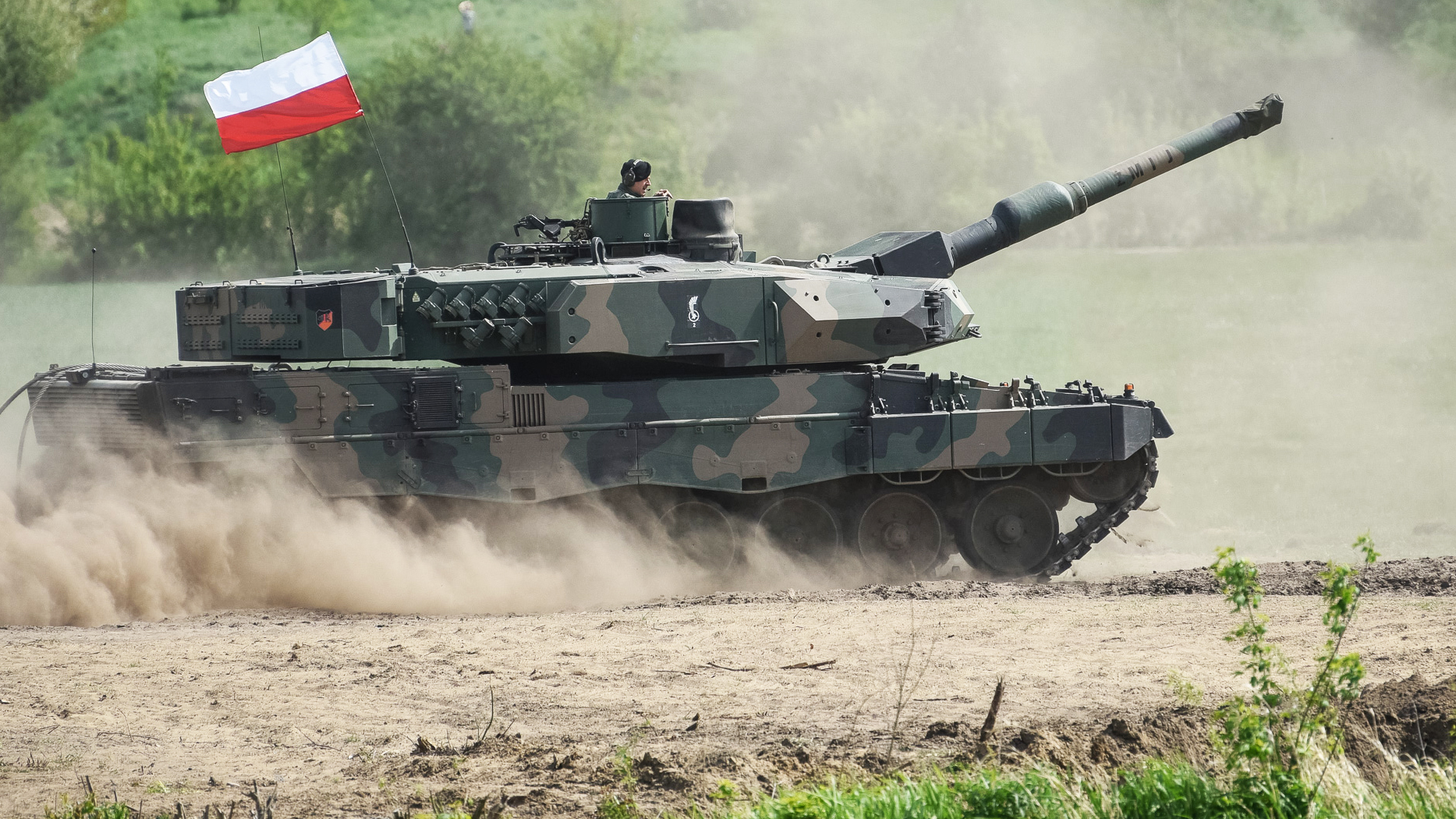Poland has outright announced that it wants to give some of its Leopard 2 main battle tanks to Ukraine, as part of an international effort to bolster Kyiv’s armored forces in the continued effort to thwart Russia’s invasion. While there has been much talk recently of providing advanced Western tanks to Ukraine, this is finally a concrete move in that direction, although such a transfer still hinges upon approval from Germany, the original source of the Leopard 2s in question. Moreover, momentum does now seem to be building behind an international coalition to send Western main battle tanks to Ukraine, with the United Kingdom, too, having confirmed that it’s considering sending some of its own Challenger 2s.
Polish Army Leopard 2A5 main battle tanks on exercise with the 11th Armored Cavalry Division:

Poland has, in the recent past, raised the possibility of supplying Leopard 2s — manufactured by Munich-based Krauss-Maffei Wegmann (KMW) — to Ukraine. With the procurement of 250 M1A2 SEPv3 Abrams tanks from the United States, 180 K2 Black Panther tanks from South Korea, and plans to build hundreds more K2s locally, Poland’s fleet of around 250 Leopard 2A4 and Leopard 2A5 tanks — which are also undergoing upgrades — will increasingly become surplus to requirements.
Speaking today during a visit to Lviv in Ukraine, Poland’s President Andrzej Duda provided the most definitive statement on the matter so far, saying that “a company of Leopard tanks for Ukraine will be transferred as part of building an international coalition.”
“Such a decision is already in Poland,” Duda added, in the Polish version of the same statement that was issued by his office in Warsaw. This, however, sounds as if the Polish president is still hedging the plan somewhat, not least because the final say on the transfer will need to come from Germany, where the government would have to issue a re-export authorization.
A typical Polish tank company reportedly consists of a command section and three platoons. Each platoon has four tanks and the command section has two more, for a total of 14.
Berlin, so far, has been unwilling to commit to approving the supply of Leopard 2 tanks to Ukraine, although it has promised to provide Kyiv with other arms, including Marder infantry fighting vehicles.
The specific mention of an “international coalition” is something we have also heard before from Polish officials.
“Poland can hand over Leopards only in a coalition of countries,” Polish Prime Minister Mateusz Morawiecki told reporters last Saturday, noting that negotiations were underway about establishing just such a grouping of countries.
A coalition of this kind would very likely consist of other European nations that are similarly willing to offer their Leopard 2s, or ammunition and spare parts for them, to Ukraine. In that way, the fact that Poland has, so far, offered to transfer such a small number of tanks would not be an issue, with this token transfer being used to start a larger effort to supply tanks of the same type.
As well as Poland, Leopard 2s in different variants are currently also fielded by the Czech Republic, Denmark, Finland, Germany, Greece, Hungary, Norway, Portugal, Slovakia, Spain, Sweden, and Turkey, all of which have previously supplied different kinds of heavy weaponry to Ukraine since the full-scale Russian invasion last February. With that in mind, the Leopard 2 is unique in that so many allied countries use and support it. Limiting the types of new tanks arriving would help Ukraine focus its sustainment efforts; already, the small groups of different combat vehicles that it’s received have created a logistics problem. Western MBTs like the Leopard 2 are even more complex, so sticking with fewer types could be key.
Tanks from Austria, France, Germany, Poland, Sweden, Ukraine, the United Kingdom, and the United States take part in the Strong Europe Tank Challenge in 2018, during which tank crews from the different countries competed against each other at the U.S. military training area in Grafenwoehr, Germany:

Two Finnish politicians, as well, have recently called for sending some of that country’s Leopard 2 tanks to Ukraine. They claimed too that there had been positive reception to their proposal from Denmark, suggesting that a coalition effort could have mileage.
Intriguingly, the Leopard 2s delivered to the Czech Republic and Slovakia, which only began to arrive in recent weeks, were supplied by Germany with the understanding that it would allow these countries to transfer Cold War-era T-72 tanks and BMP infantry fighting vehicles to Ukraine. In this way, Germany was able to support the delivery of tanks to Kyiv, without actually donating German-made hardware directly.
As well as continuing to promote the envisaged coalition of Leopard 2 operators, it is very likely that Duda is also trying to further drum up political support for the Leopard 2 transfer, joining other countries, including France, which has apparently also pushed for this to happen. At the same time, at least one senior defense official in the United States has said there is a definite possibility that the U.S. government could transfer unspecified tanks to the Ukrainian Armed Forces in the future, prompting speculation about the potential of U.S.-made M1 Abrams tanks hitting the battlefield in Ukraine. This is a development you can read more about here.
The United Kingdom, too, by saying it’s considering supplying Kyiv with around a dozen Challenger 2 tanks, is also helping to force Berlin’s hand when it comes to transferring Leopard 2s. “It’s clear that battle tanks could provide a game-changing capability to the Ukrainians,” U.K. Prime Minister Rishi Sunak said today. If one Western European country is willing to supply advanced MBTs to Ukraine, it makes the current German reluctance to do the same harder to justify.

At this early stage, however, it seems as if Berlin is continuing to drag its heels, or at least it’s waiting to see what happens next.
Asked about the proposed tank alliance, a German government spokesperson said on Monday he was “not aware of any such requests at the moment.” The same spokesperson added that “we constantly reassess the situation and then derive our closely internationally coordinated decisions from it.”
“The German government is not aware of any requests from its allies to send Leopard battle tanks to Ukraine,” another German government spokesman said today.
In some ways, the current Leopard 2 debate mirrors the efforts last year to supply Ukraine with MiG-29 Fulcrum fighter jets, which would have been drawn from Bulgaria, Poland, and/or Slovakia. Despite many positive words from officials in different countries, an official transfer plan for the aircraft publicly announced by Poland was shot down and didn’t appear to be coordinated with the two other countries that said they would be involved. So far, while none of these aircraft have actually been transferred to Ukraine, its air force has received much-needed weapons and spares for the MiGs.
Now, however, there is a growing urgency around providing Ukraine with modern Western tanks, especially as fears grow that Russia could be poised to launch a new offensive. In the past, though, advanced main battle tanks were not among the many weapons supplied to Kyiv, which instead received Soviet-era tanks from East European stocks. The value of more capable armor to Ukraine is something that we have explored in-depth in the past. Meanwhile, between the comments from the British government today, and the U.S. comments around the last aid package, there does seem to be a growing consensus among Ukraine’s international partners that the Ukrainian Armed Forces need more tanks, too.
While there is no doubt that advanced Western tanks would be very gratefully received by Kyiv, it remains to be seen how the proposed Leopard 2 coalition takes shape and, ultimately, whether it finds the approval from Berlin that will be required for it to work.
Contact the author: thomas@thedrive.com
